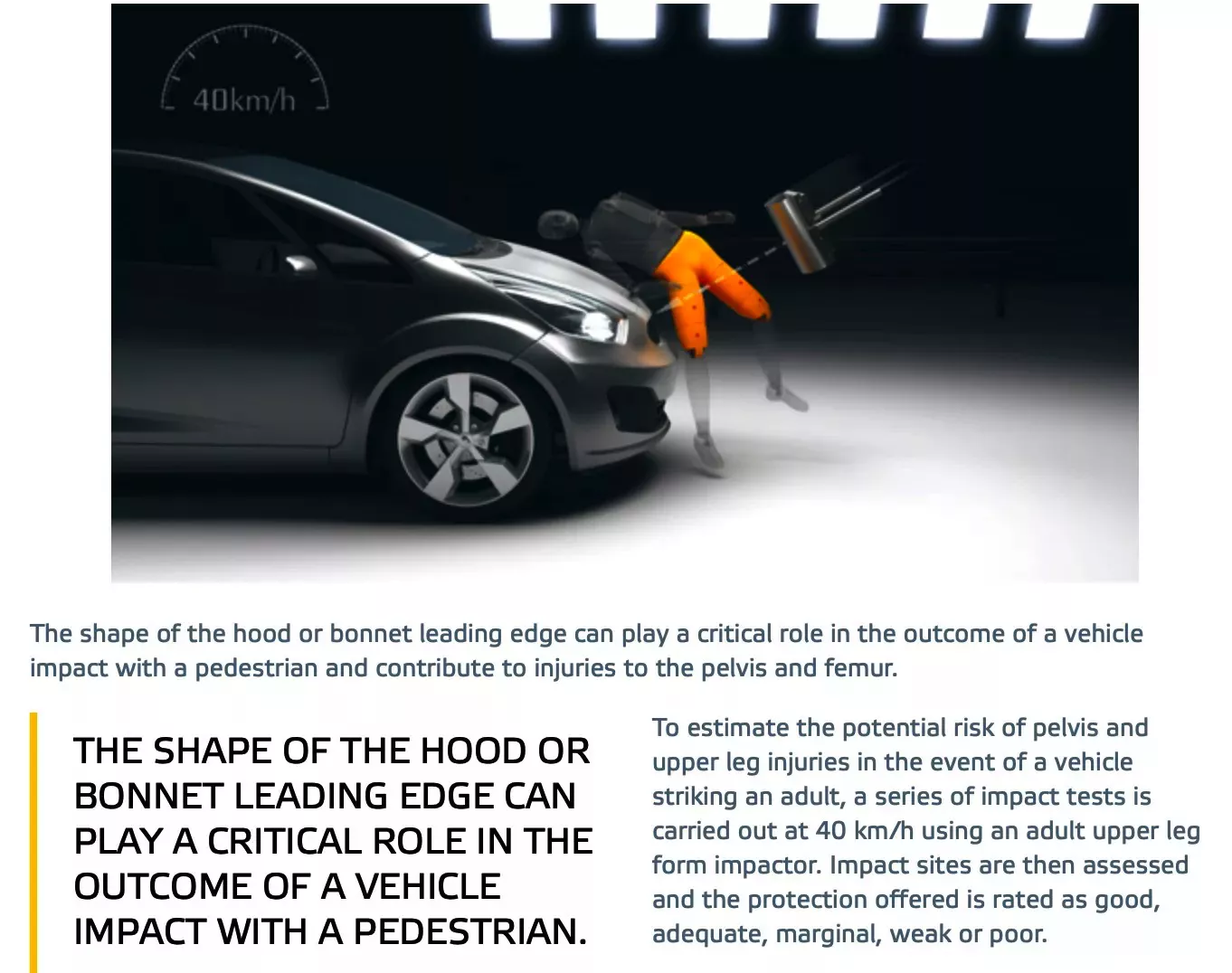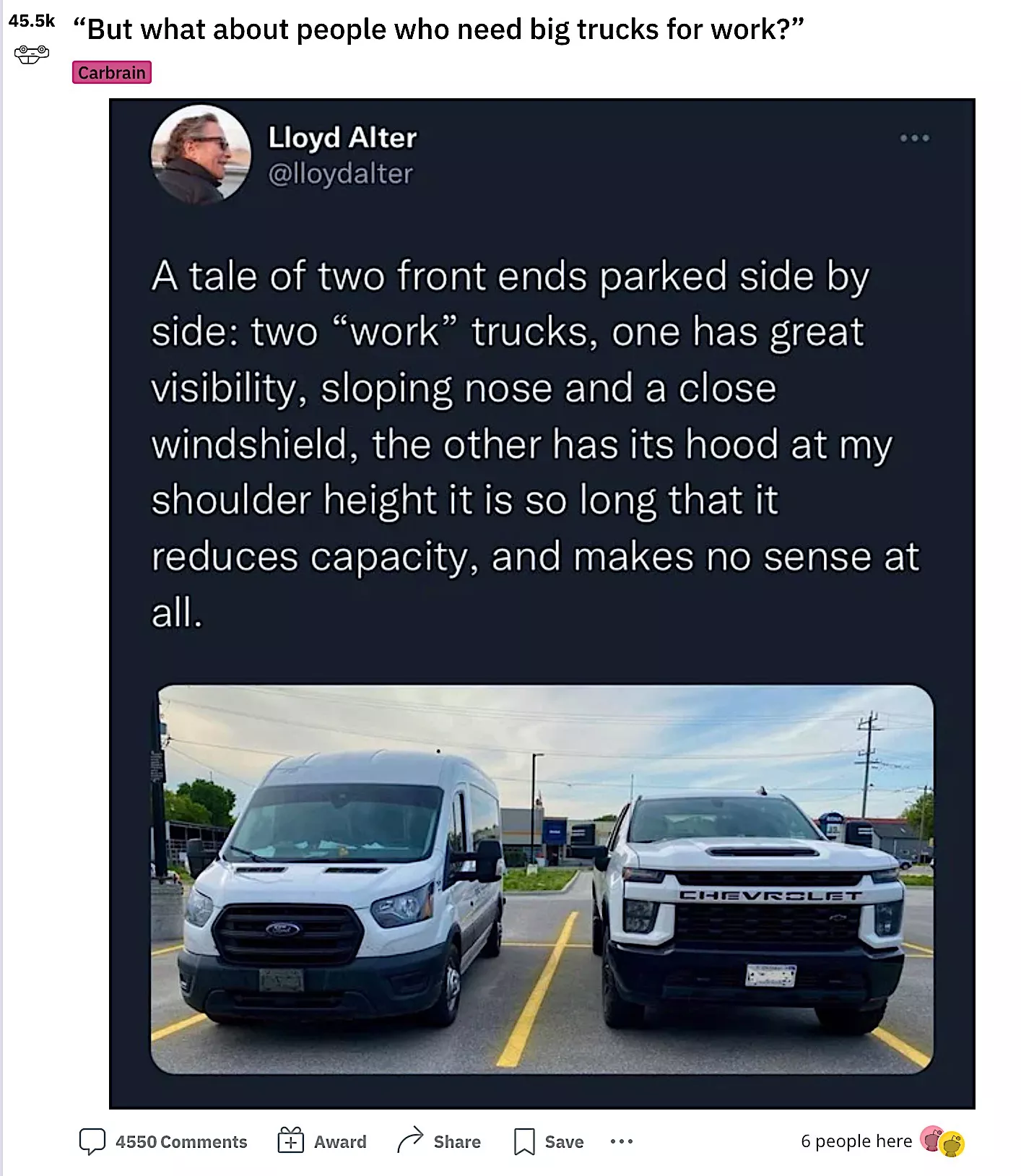I do not remember the first time I ran across Treehugger. It was probably at Slate where I was writing in Moneybox and The Best of The Fray. Slate was featuring Treehugger in a series called “Go on an eight-week carbon diet” as written by Meaghan O’Neil in October 2006. Time does fly, doesn’t it? Not everyone gets satisfaction with Treehugger’s offerings as Jack Schafer at Slate points out. But then, maybe he was agitating? You know, stirring the pot so to speak to attract more readers. A sampling of one of his commentary at Slate: There’s not much in the TreeHugger-Slate package we haven’t heard a million times since the first oil embargo: Install storm windows. Insulate. Weather strip. Keep the furnace settings low and the AC settings high.
Topics:
run75441 considers the following as important: Lloyd Alter, politics, SUV Trucks, Taxes/regulation, Treehugger, US/Global Economics
This could be interesting, too:
Robert Skidelsky writes Lord Skidelsky to ask His Majesty’s Government what is their policy with regard to the Ukraine war following the new policy of the government of the United States of America.
Joel Eissenberg writes No Invading Allies Act
Ken Melvin writes A Developed Taste
Bill Haskell writes The North American Automobile Industry Waits for Trump and the Gov. to Act
I do not remember the first time I ran across Treehugger. It was probably at Slate where I was writing in Moneybox and The Best of The Fray. Slate was featuring Treehugger in a series called “Go on an eight-week carbon diet” as written by Meaghan O’Neil in October 2006. Time does fly, doesn’t it?
Not everyone gets satisfaction with Treehugger’s offerings as Jack Schafer at Slate points out. But then, maybe he was agitating? You know, stirring the pot so to speak to attract more readers. A sampling of one of his commentary at Slate:
There’s not much in the TreeHugger-Slate package we haven’t heard a million times since the first oil embargo: Install storm windows. Insulate. Weather strip. Keep the furnace settings low and the AC settings high. Turn things off. Buy energy-efficient appliances and cars. Avoid unnecessary trips. Carpool. Don’t waste. But that’s not good enough for the green worshippers at TreeHugger, whose aesthetic is ascetic.
The series counsels’ readers to decarbonize by resisting new purchases of cotton clothes—unless of the organic variety—and to seek fibers made of hemp, bamboo, ramie, linen, silk, and lyocell (wood pulp). In greenifying Christmas, one must give up the carbon gluttony of Xmas cards, Xmas wrapping paper, Xmas trees, and electrified Xmas decorations. “If you’re decorating with candles, choose the ones made from soy wax or beeswax,” the article seriously advises. And, if you must eat, TreeHugger says, eat locally and organically, and avoid processed food and meat.
As the temperature of the world keeps rising and the accumulation of CO2 keeps increasing, the US keeps running short of the goal of minimizing each. Maybe it is just waiting until things change and reverses? Even so, we could conserve, yes?
This article is not about the gas-burning hogs these SUV trucks are. Neither is it about driving the TooBigTooFastTooLoudTooOften or TBTFTLTO. We wouldn’t touch any of that stuff, will we? The article by Treehugger is about the new design of SUV trucks which are imposing an increasing threat in accidents with cars and pedestrians. If you read the comments, you will see the same old arguments on imposing on their rights conveniently forgetting the rights of others. Oh and if you have not seen them yet, squat vehicles are out there too. Lower back end so you can see the stars and a little less upfront unless it is 6 feet tall including your car. Enjoy . . .
“A Tale of Two Trucks: Why US Pickups Need European-Style Regulations,” Treehugger, Llyod Alter
Safe streets and walkable communities are key to reducing our carbon emissions from driving, which is one reason we complain so often about the trend away from cars and to SUVs and pickup trucks. The latter, officially known as light trucks, is disproportionately likely to kill pedestrians and cyclists. As the Insurance Institute for Highway Safety (IIHS) noted in a report,
“The data suggest that the elevated danger to pedestrians from SUVs in these crashes may be largely related to injuries caused by impacts with the vehicles’ leading edge: the bumper, grille, and headlights.”
Many studies conclude the increasing weight of these trucks contributes to the carnage:
“First, the additional weight means the vehicle will take longer to come to a stop and will strike with more force as compared to a lighter vehicle. Second, large vehicles have higher front ends, affecting the point of impact on a pedestrian.”1

European light trucks have far more sensible designs because they have to meet Euro NCAP (European New Car Assessment Programme) standards that protect pedestrians. I got particularly excited about the Ford Transit, which has a low sloping front end and great visibility. Pedestrians are more likely to be seen when they are hit and they are likely to roll up on top rather than having to be picked out of the grill.
When I was recently doing a lecture in North Bay, Ontario, I saw a big Chevy Silverado parked directly next to a Ford Transit. I got close to the pickup, close enough to somehow set off an alarm—I didn’t touch it! Really!—to notice the top of the hood was at about my nose level. I could look straight into the Transit. Of course, I tweeted out the photo and got more likes and comments than I have had for years.

The tweet also got picked up on Reddit, where it got 4500 comments.
There were a number of comments from people who use them for work. Of course, work is what they were originally designed for. But as Ryan Cooper wrote in “The Case Against American Truck Bloat“:
“Trucks and SUVs do not make up 70 percent of automobile sales nowadays because Americans are now 70 percent contractors and HVAC repairmen. Nor has the average pickup gained 730 pounds since 2000 because 100 million people have taken up cattle ranching. The vast majority of SUV and truck drivers would have driven a sedan in previous ages, and for these people it’s about looks, power, speed, and perceived safety for drivers. Thinking about pedestrians might upset this comfortable arrangement.”
People are still commenting on Twitter. But they are getting increasingly nasty and personal, with soy latte type comments just the start of it, because, in the U.S. and Canada, pickup trucks have become part of the culture war, the real working man versus the city boy who doesn’t.
In fact, Ford offers real working vehicles that can do the same job, which still can be designed for good visibility and greater safety. One would think that people who work all day with their trucks would care about this.
In Europe, every vehicle has to meet standards for pedestrian and cyclist safety. They now have Autonomous Emergency Braking (AEB) that apparently works. They write about the Ford Transit:
“The system also detects vulnerable road users like pedestrians and cyclists, and here it scored well. Even in the most challenging of Euro NCAP’s pedestrian tests—a child running from behind parked cars into the path of the vehicle—the system responded well up to around 40 km/h and, in general, collisions were avoided or mitigated for pedestrians and cyclists.”2
After a week of being asked “You’ve never done an honest days work in your life have you?” or being told I don’t know the difference between a truck and a van. They are both legally light trucks under U.S. regulations. I come to the same conclusion that I have in earlier posts: Make light trucks as safe as cars or ban them from cities. It’s obvious this is doable; every new European light truck does it.
These massive American pickup trucks and SUVs are killing kids and older people at twice the rate of regular cars. So many of the commenters suggest they need a pickup for work or for towing, but there is no reason that they need to have those deadly front ends and terrible visibility. Why not regulate this?

